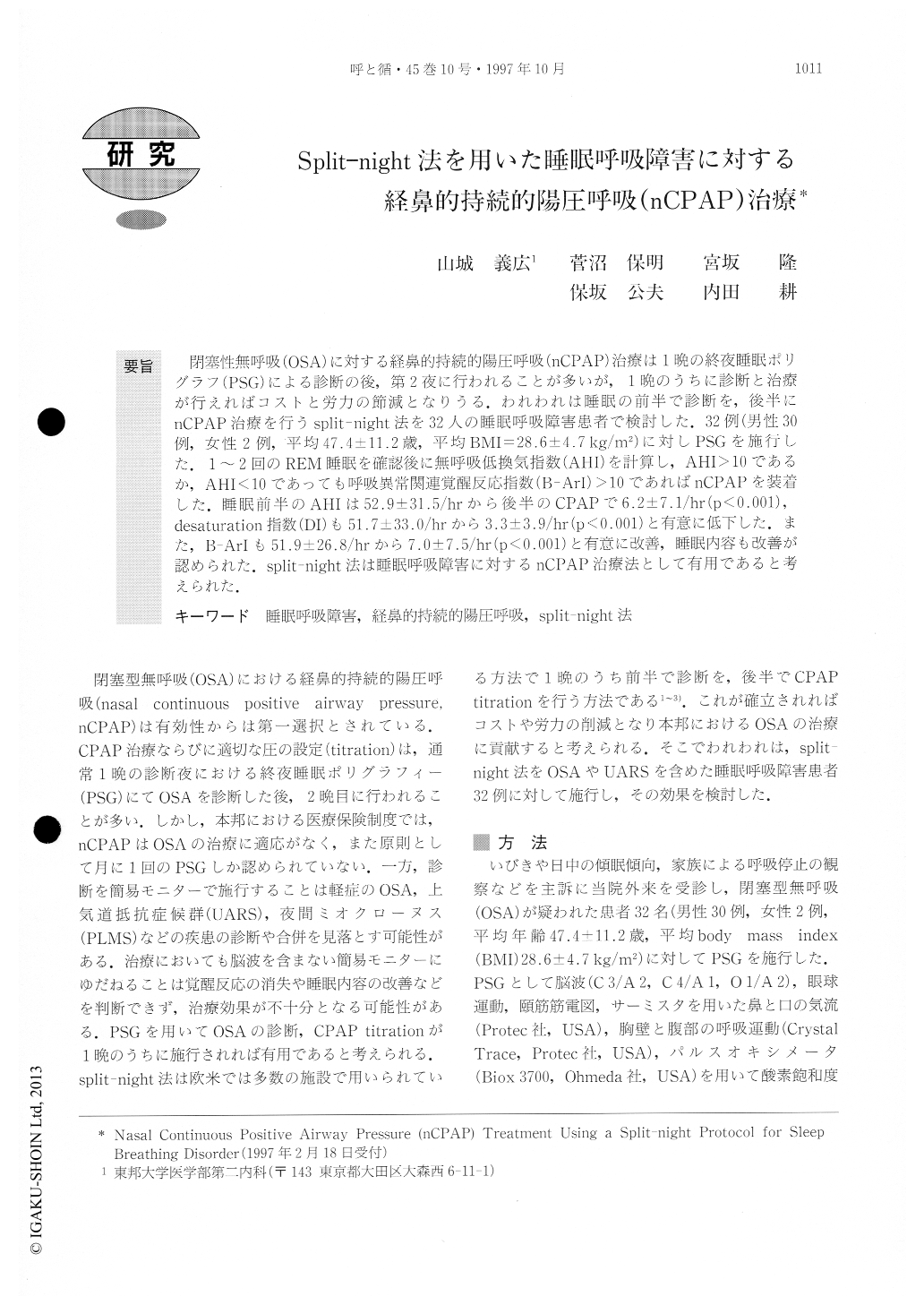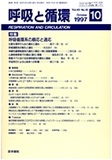Japanese
English
- 有料閲覧
- Abstract 文献概要
- 1ページ目 Look Inside
閉塞性無呼吸(OSA)に対する経鼻的持続的陽圧呼吸(nCPAP)治療は1晩の終夜睡眠ポリグラフ(PSG)による診断の後,第2夜に行われることが多いが,1晩のうちに診断と治療が行えればコストと労力の節減となりうる.われわれは睡眠の前半で診断を,後半にnCPAP治療を行うsplit-night法を32人の睡眠呼吸障害患者で検討した.32例(男性30例,女性2例,平均47.4±11.2歳,平均BMI=28.6±4.7 kg/m2)に対しPSGを施行した.1〜2回のREM睡眠を確認後に無呼吸低換気指数(AHI)を計算し,AHI>10であるか,AHI<10であっても呼吸異常関連覚醒反応指数(B-ArI)>10であればnCPAPを装着した.睡眠前半のAHIは52.9±31.5/hrから後半のCPAPで6.2±7.1/hr(p<0.001),desaturation指数(DI)も51.7±33.0/hrから3.3±3.9/hr(p<0.001)と有意に低下した.また,B-ArIも51.9±26.8/hrから7.0±7.5/hr(p<0.001)と有意に改善,睡眠内容も改善が認められた.split-night法は睡眠呼吸障害に対するnCPAP治療法として有用であると考えられた.
Nasal continuous positive airway pressure (CPAP) treatment for obstructive sleep apnea (OSA) is generally applied on the second night following the diagnostic polysomnography (PSG) on the first night. Diagnosis and treatment in one-night PSG would be cost effective and labor saving, if it were showen to be effective. We used a split-night protocol for 32 patients with sleep breath-ing disorder, namely a diagnosis was made in the first half of the night, and CPAP titration was carried out in the latter half. 32 patients (30 males, two females, mean age was 47.4±11.2 years, mean body mass index was 28.6±4.7kg/m2) who were suspected of having OSA were studied, using a standard 8 hours of PSG with snoring sound and pretibialis EMG.
In the first half of the night, after one or two REM periods. apnea hypopnea index (AHI) was calculated, and CPAP was attached to the patients when AHI> 10 was reached. Even when there was AHI <10, CPAP was attached if the breathing-disorder-related arousal index (B‐Arl)-> 10. AHI was significantly reduced from (52.9±31.5/hr) in the first half of the night to (5.8±11.9/ hr, p<0.001) in the latter half of the night. Desaturation index decreased from 51.7±33.0/hr to 3.3±3.9/hr (p<0.001). B-ArI was also reduced from 51.9±2.8/hr to 7.0.±7.5/hr (p<0.001). Sleep parameters were improved in the latter half. For example, sleep efficiency index (TST/ TRT) increased, awakenings and stage 1 decreased, and stage REM increased significantly. We concluded that split-night protocol may be useful for the CPAP treat-ment for sleep breathing disorders.

Copyright © 1997, Igaku-Shoin Ltd. All rights reserved.


